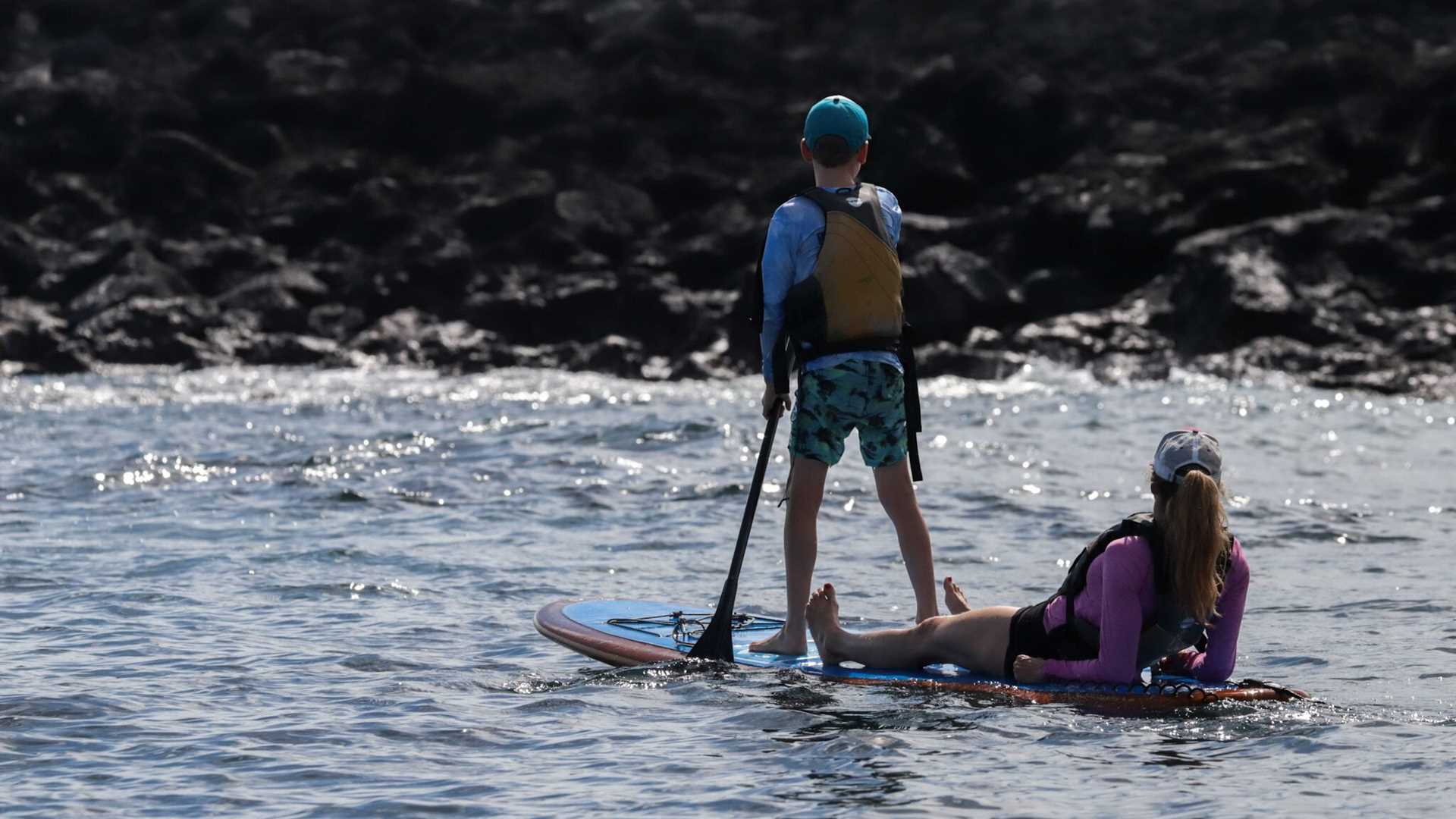After exploring the western region of Galapagos over the last couple of days, we navigated to Santiago Island, located in the heart of the Galapagos archipelago. We explored three different sites, the first being Espumilla Beach. Here we had the opportunity to spot land birds perched on the branches of the black mangroves. We enjoyed listening to the chirping of mockingbirds, yellow warblers, and finches as we walked the brown sand beach. This area is also a nesting site for green sea turtles where they can find optimal conditions for the next generation of hatchlings.
After breakfast, we anchored in Buccaneer Cove, an eroded shoreline located on the northwestern flank of Santiago Island. We explored the scenic visitor site that was frequented by pirates in the 19th century and by Charles Darwin when he arrived on the HMS Beagle in 1835. Some guests decided to explore the natural caves and eroded tuff cones with kayaks and paddleboards, where they spotted brown pelicans and Nazca boobies. At the same time, other guests preferred viewing the undersea wildlife from aboard the glass-bottom boat or while deepwater snorkeling.
In the afternoon, we changed location to the westernmost point on the island, Puerto Egas. On this black sandy beach, we had the opportunity to swim and snorkel. Meanwhile, the naturalists guided other groups inland for a hike. We returned along the coast where we hiked on the black lava shore which has been eroded into tunnels and grottos by the relentless pounding of the sea. The coastal scenery was stunning, and the wildlife was both varied and abundant. We once again enjoyed taking many photos of the unique and utterly fearless inhabitants of these enchanted islands.







